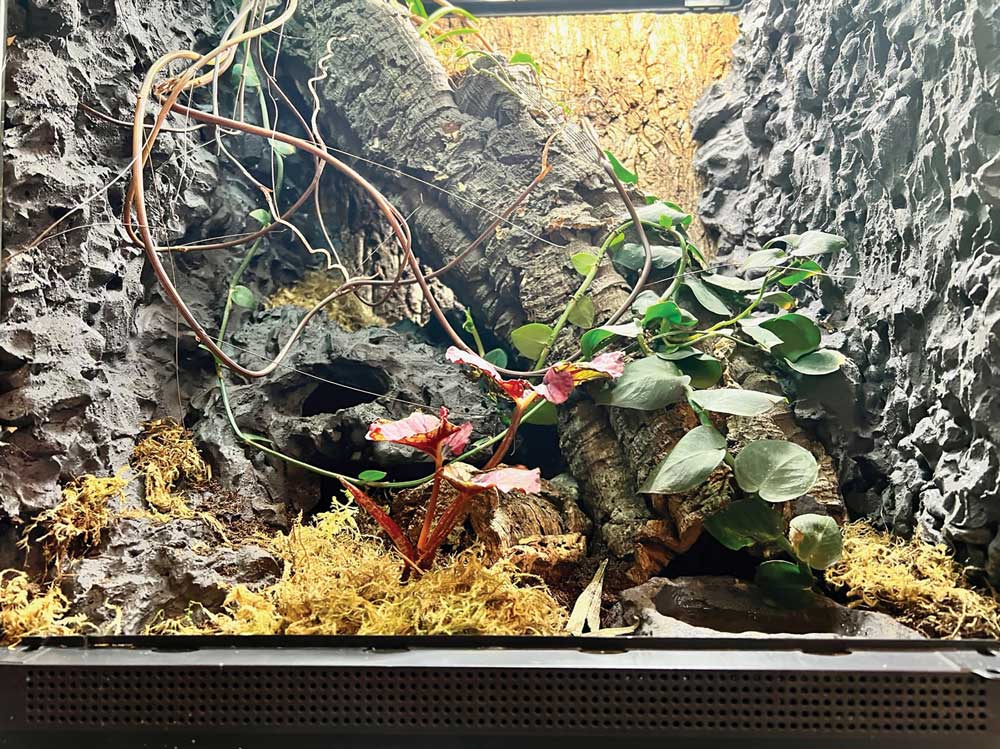This review chronicles a continuing effort to rehouse the animals under my care to updated enclosure designs. The overall process has been going well
This review chronicles a continuing effort to rehouse the animals under my care to updated enclosure designs. The overall process has been going well however a small number continue to be housed in antiquated, screen-covered aquariums with the goal being to transition to modern vivariums specifically designed for reptiles, amphibians, and invertebrates.
In a previous review I offered a brief history of commercially produced reptile and amphibian products. While there is now an incredible amount of husbandry equipment, supplies, feeding supplements and so forth available from numerous manufacturers, perhaps one of the most revolutionary advances has been the development of modern enclosures designed with front opening doors as well as cross ventilation features. On the surface these concepts seem relatively simple however both represent a significant advance in herpetocultural technology. Front opening doors make enclosures so much easier to access as well as help prevent accidental escapes during terrarium servicing. The cross-ventilation design aids in keeping air from stagnating and helps inhibit the growth of mold in the substrate.
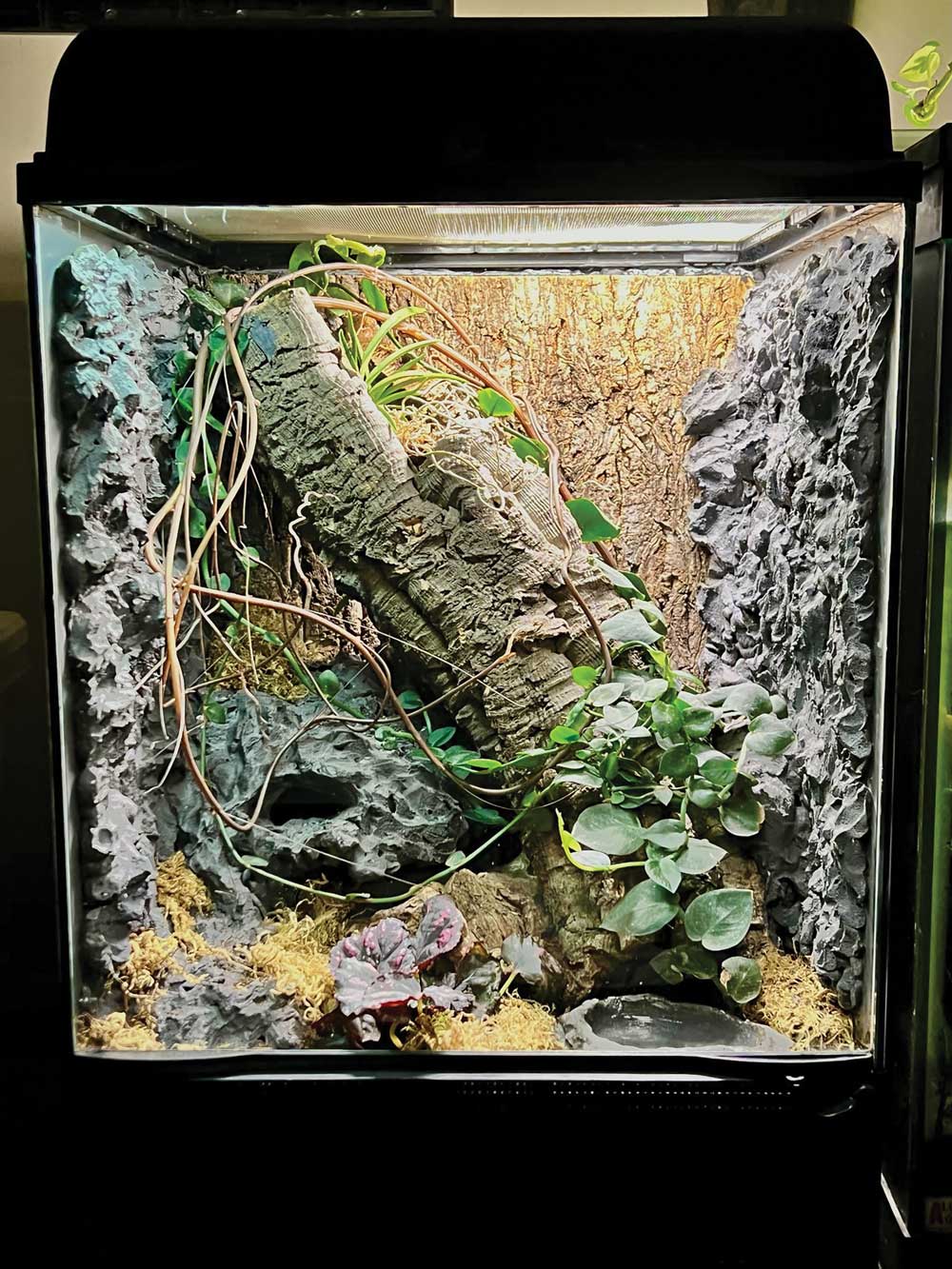
The enclosure is designed to mimic a cave entrance. Plenty of climbing areas are present for the gecko to move about. Photo by Foster Reves.
The Zoo Med Large Naturalistic Terrarium measures in at 18 x 18 x 24 inches (45.7 x 45.7 x 60.9 cm) and was chosen as an ideal size to rehouse a pair of starry night cave geckos (Goniurosaurus kuroiwae). The floor space is ample, yet not so large that locating buried eggs will be terribly difficult. In addition, the height easily facilitates the climbing habits of this species.
Goniurosaurus is a genus of geckos native to various parts of China, Japan, and Vietnam.
A Eublepharid belonging to the same family as the more popular leopard (Eublepharis macularius) and African fat-tailed (Hemitheconyx caudicinctus) geckos, Goniurosaurus are collectively referred to as cave geckos due to many of the species frequenting the areas around cave entrances. There are approximately 25 species in the genus, with many being attractively colored. Goniurosaurus kuroiwae is one example and is often referred to as the starry night cave gecko due to white speckling against a black base color. Native to the Okinawa Islands in the Ryukyu Archipelago of Japan, G. kuroiwae typically are found in subtropical forests located in karst limestone terrain.
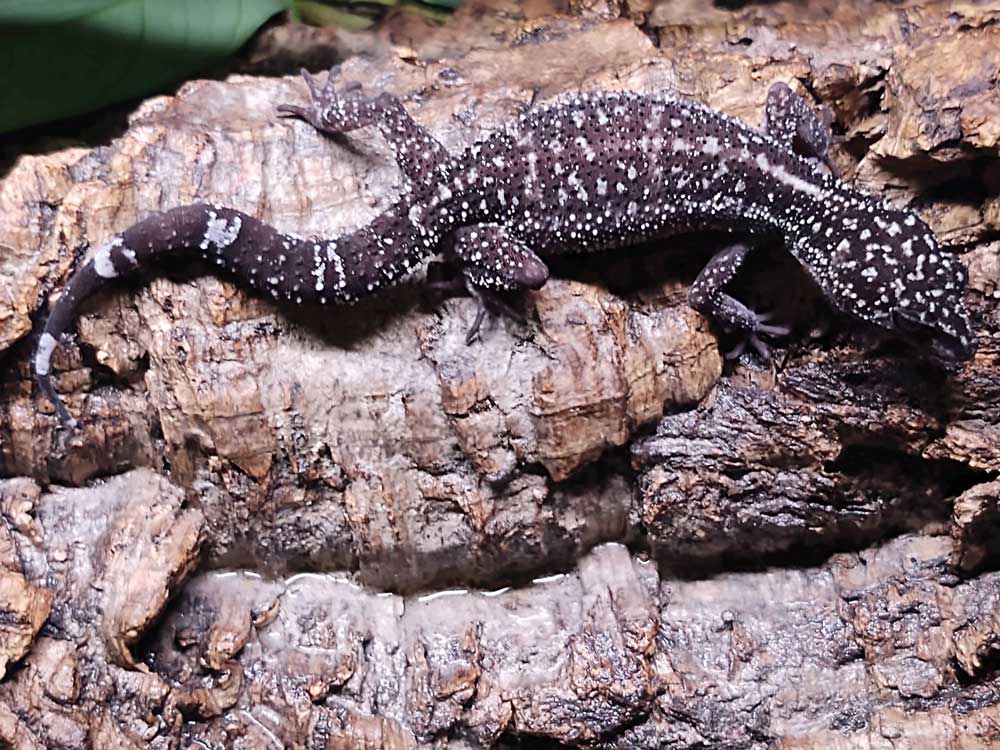
Native to the Okinawa Islands in the Ryukyu Archipelago of Japan, G. kuroiwae typically are found in subtropical forests located in karst limestone terrain.
Replicating the exact environment of this limestone environment would be difficult, especially with plant species. This said, I at least wanted to keep an Asian theme with the foliage. In general, when planting enclosures, I prefer utilizing fewer species which contrast well. Planting a multitude of different species in a relatively small space certainly has a charm, however it is less common to see such groupings in nature.
Cave geckos are semi-arboreal. One main feature that I wanted to incorporate into this build was a background and side walls that replicate a rocky outcropping that one would encounter around a cave entrance. Taking inspiration from one of Dayyan Saylany’s videos on his Reptiliatus YouTube channel, I decided to utilize the Drylok method in order to replicate a rock wall.
The Drylok method of hardscape construction involves the use of expanding foam, a Dremel tool, waterproofer, and liquid cement. In essence, expanding foam is used to lay down a foundation structure, including the side walls and caves. Approximately 24 hours later when the foam is dry a Dremel tool is then used to trim all of the rounded edges in order to create a stony appearance. A Shop Vac is essential in order to remove all of the foam debris.
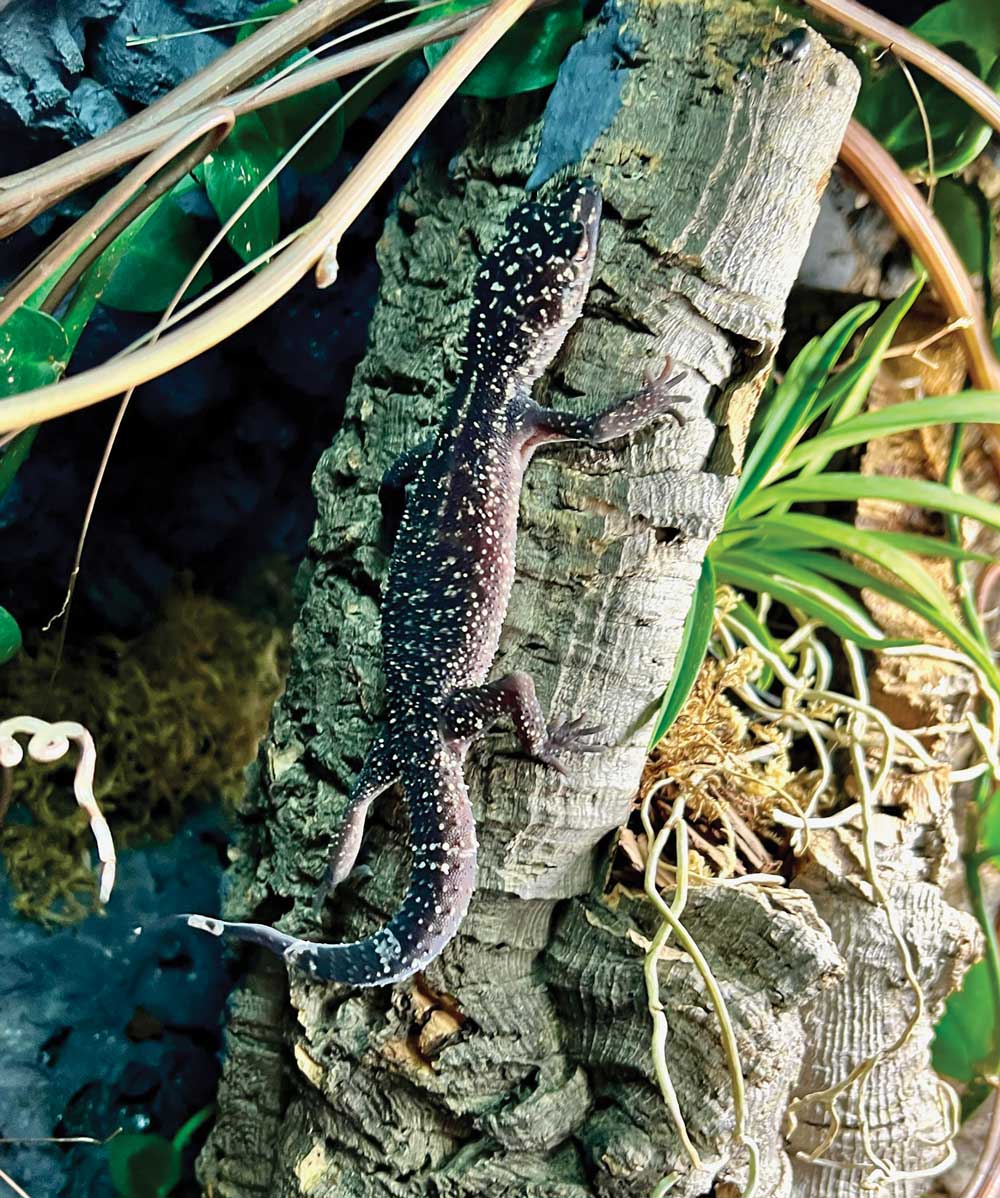
Native to the Okinawa Islands in the Ryukyu Archipelago of Japan, G. kuroiwae typically are found in subtropical forests located in karst limestone terrain.
Once all of the debris has been removed, the Drylok sealant, colored by Quickrete Liquid Cement, is applied over the foam in at least several layers. The use of rubber or latex gloves, protective eyewear, and a face mask is highly recommended when using the chemicals. The result is an aesthetically pleasing yet functional environment suitable for rock climbing species. In addition to the walls, stacked shelters were also created. The lower shelter is directly over the substrate and serves as one of the humid hides. The shelter above this one contains no substrate and functions as a dry hiding area.
In addition to replica stonework, cork bark in various forms was used not only to provide additional shelter and anchoring surfaces for the plants, but also to create the look of tree growth and a fallen log. A large cork round was used in a manner that incorporated several features, including a horizontal and vertical hide, climbing surface, as well as a planting surface for an epiphytic plant. A partially buried curved section of cork slab was used to provide additional shelter.
Generic clay pellets are used as a drainage layer. Placed directly over the pellets, the Zoo Med Naturalistic Terrarium Substrate Mesh was used to separate the drainage layer from the soil. The dimensions of the mesh perfectly matched those of the terrarium so no additional trimming was required.
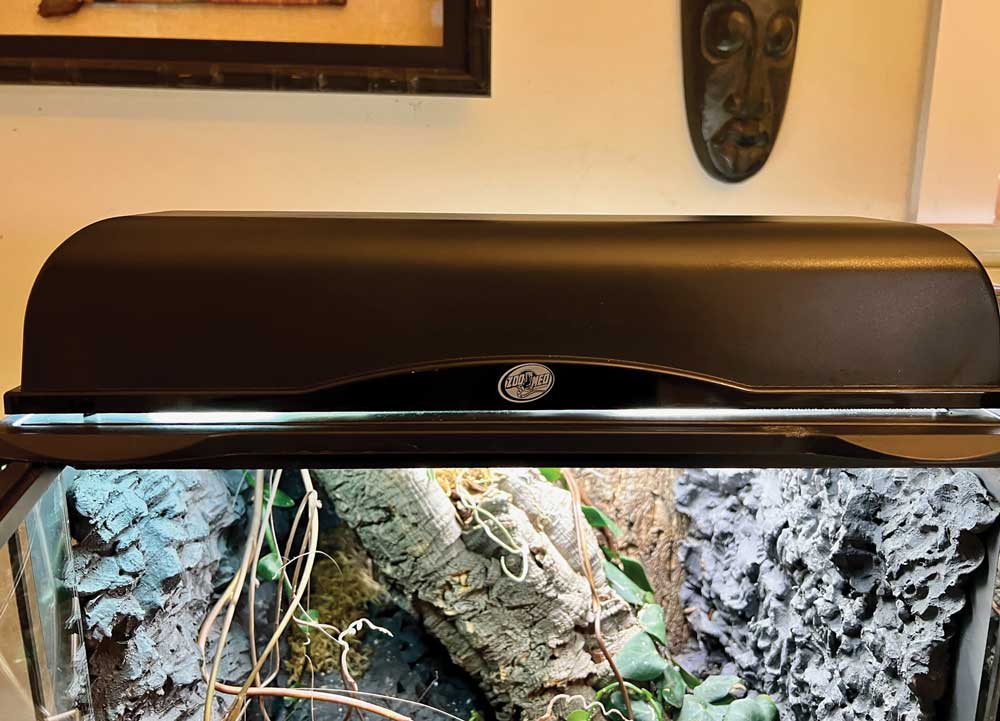
Two Zoo Med ReptiSun 5.0 UVB bulbs were used instead of adding a heat bulb.
Zoo Med Reptisoil is used as a substrate. The combination of humus, peat moss, sand, soil, and carbon works well as a premade mixture, is free of toxins, and plants grow well in it. In addition to the soil, dried bamboo leaves and Zoo Med Terrarium Moss were added both as accent items as well as additional food sources for the isopods. Zoo Med Terrarium Moss is a dried sphagnum moss that is all natural, with no dyes, and is safe to use immediately out of the box. The bamboo leaves were harvested from plants in my yard in which no herbicides or pesticides are ever used.
Zoo Med Large Double Door Paludarium Review
When deciding on plant species to utilize, several factors were of personal importance. A vining species, an epiphyte, and terrestrial shrub-like species. The Shingle plant (Rhaphidophora hayi) is a vining aroid native to Southeast Asia. Shingle plants grow by the vine remaining in close contact to trees, rocks, and other surfaces with the leaves remaining flat. R. hayi sports dark green foliage and grows well under vivarium conditions, even requiring pruning from time to time. The Vanda Falcata, (Neofinetia falcata) is a beautiful epiphytic orchid. Native to China, Japan, and Korea, there are now many cultivars, many of which remain small and tend to do well under terrarium conditions. Painted leaf begonias (Begonia rexcultorum) remain true to the name, consisting of many stunning cultivars. Native to Asia, painted leaf begonias do well under proper terrarium conditions, with pruning required to keep them from overtaking an enclosure.
Despite the fact that I am not a huge fan of artificial plants, the Zoo Med Naturalistic Flora Flexible Hanging Vine was incorporated as an additional accent into the design. The addition of vines create another level of visual appeal in a naturalistic vivarium. Nearly impossible to distinguish from those found in nature, the flexible component of the vine allows for exact manipulation and placement.
In addition to plants, dried leaves, and moss, the addition of an isopod species will help provide a bioactive element to the enclosure. Cubaris sp. “Iriomotensis,” or Japan red edge, is an isopod of uncertain origin from Japan. There is a species described as Cubaris iriomotensis however it is uncertain if colonies being sold in the US are true iriomotensis or another species. Regardless of scientific nomenclature, Japan red edge isopods are an attractive species that will aid in breaking down organic wastes in the terrarium.
Lighting is provided by an 18-inch (45.7 cm) Zoo Med Naturalistic Terrarium Hood. The hood has two screw-in receptacles for either LED or heat bulbs. Since Goniurosaurus prefer cooler temperatures no additional heating source is required. Two Zoo Med ReptiSun 5.0 UVB bulbs were used instead of adding a heat bulb. In addition, extra lighting is provided in the form of the spare length of a 48-inch (121.9 cm) daylight LED fixture which is used for an adjacent 36 in (91.4 cm) aquarium. One feature of the Terrarium Hood that I really like is that each light is powered by a separate switch which allows for a gradual darkening of the enclosure each evening, as opposed to having all of the lights just go out at once. The ability to turn off lights at various times can closely simulate a natural sunset. The opposite is true in the mornings, with the artificial sunrise being less sudden and more incremental in nature.
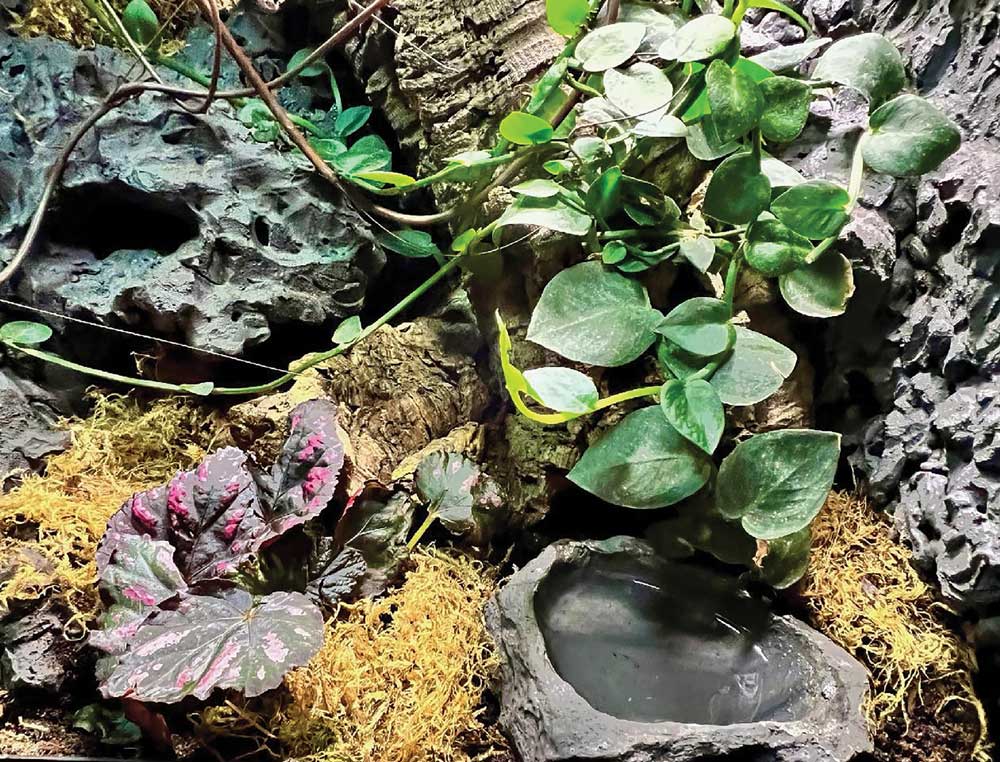
The floor of the enclosure includes Reptisoil and sphagnum moss.
As with all of the company’s enclosures, the Naturalistic Terrarium is aesthetically pleasing. The single door design allows for easy access, not only for the initial build but for subsequent maintenance as well. The unit comes boxed in sleek packaging with attractive box art featuring a crested gecko (Correlophus ciliatus). As with the packaging on the other enclosures produced by the company, the choice of species for the box art is made responsibly. It would have been easy to use pics of large, eye-catching animals for an enclosure of this size. As with the other enclosures produced by Zoo Med, a booklet is included that features instructions for creating a waterfall using additional accessory products if desired. A paper background depicting bromeliads and other plants is included. The reverse side of the background features other products by the company including instructions on how to create a waterfall feature using accessory products. In general, I would like to see more background options for enclosures designed for not only reptiles, amphibians, and invertebrates, but also aquariums as well. The Zoo Med Natural Cork Tile background was perfect for the design that I envisioned. The cork tile background, substrate mesh, and hood are all excellent accessory products designed to fit the terrarium perfectly.
In summary, the terrarium can serve as an attractive and versatile enclosure for a number of reptile, amphibian, and invertebrate species. The dimensions are well suited for arboreal species in particular. The 18-inch (45.7 cm) footprint provides ample space yet is compact enough to allow for multiple enclosures to be placed side by side given enough room. Whether one is housing a single display animal such as large Poceliotheria, or a wall of enclosures dedicated to small arboreal species such as Anolis and Phelsuma, the Zoo Med Naturalistic Terrarium serves its purpose well and is a worthy addition to any hobbyist’s home. Special thanks to Zoo Med Laboratories for providing the Terrarium, Hood, Reptisoil, and Cork Round for this review.

